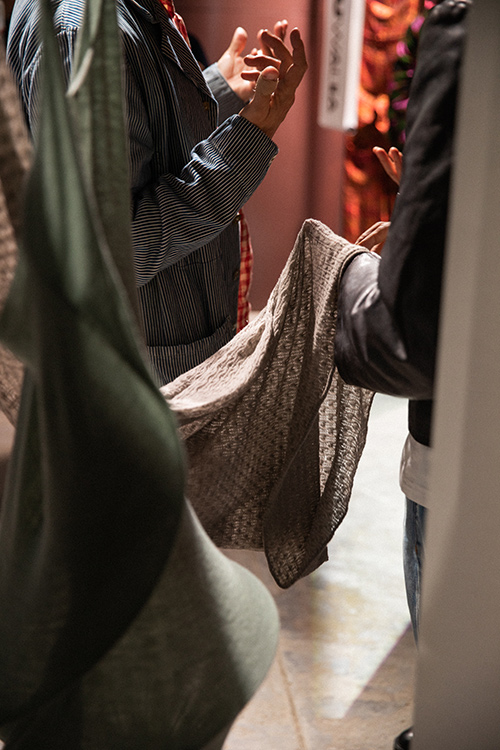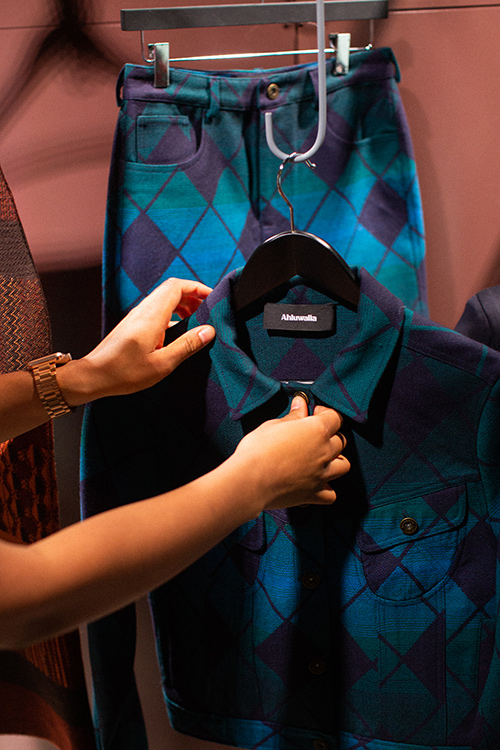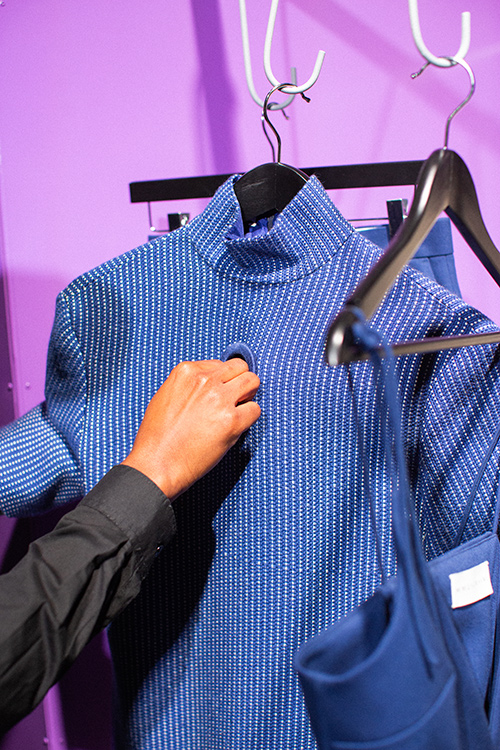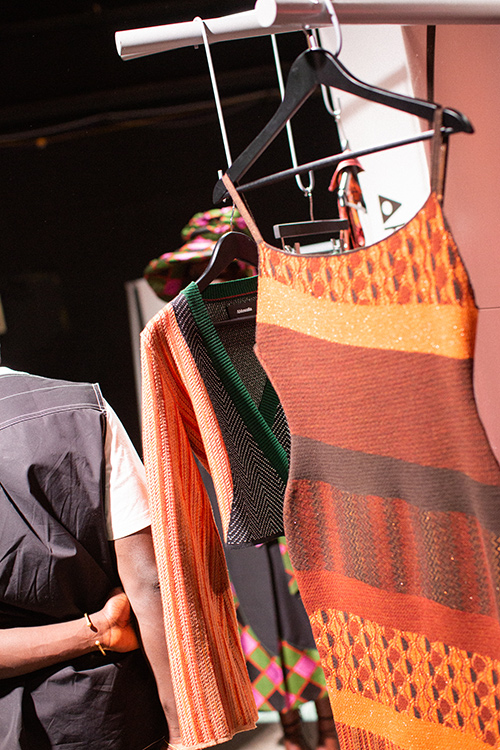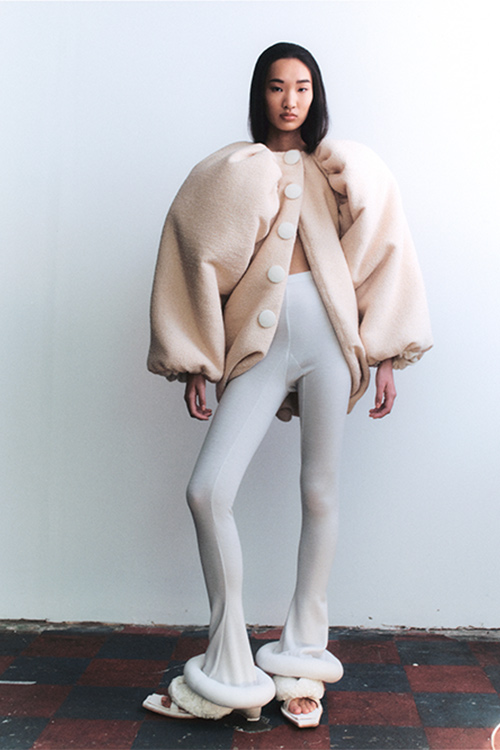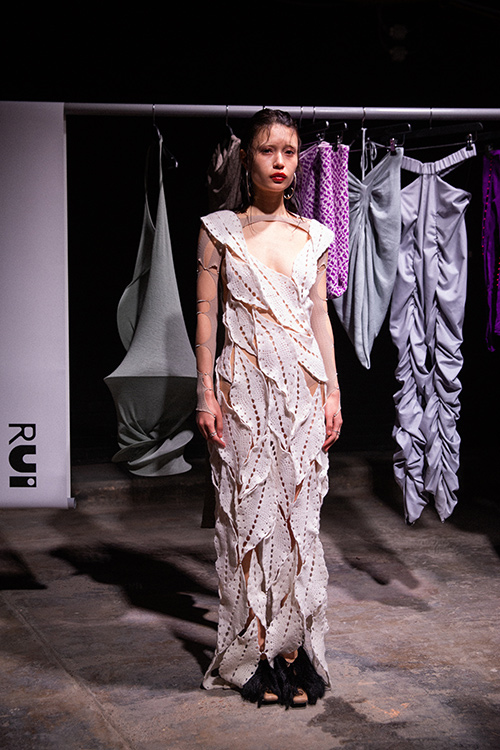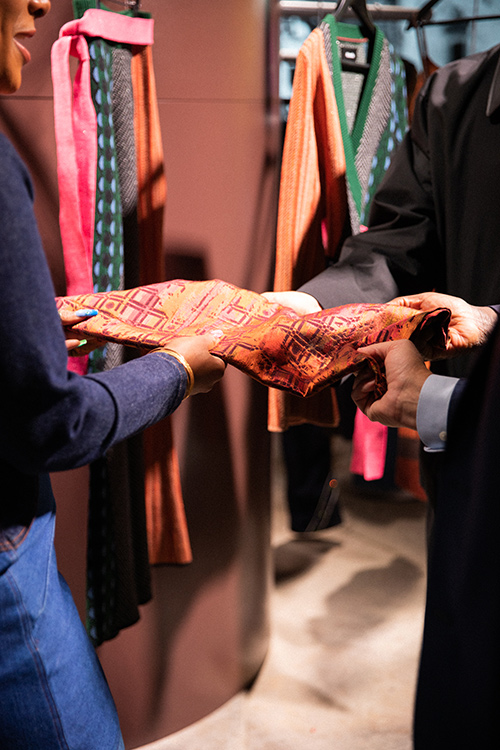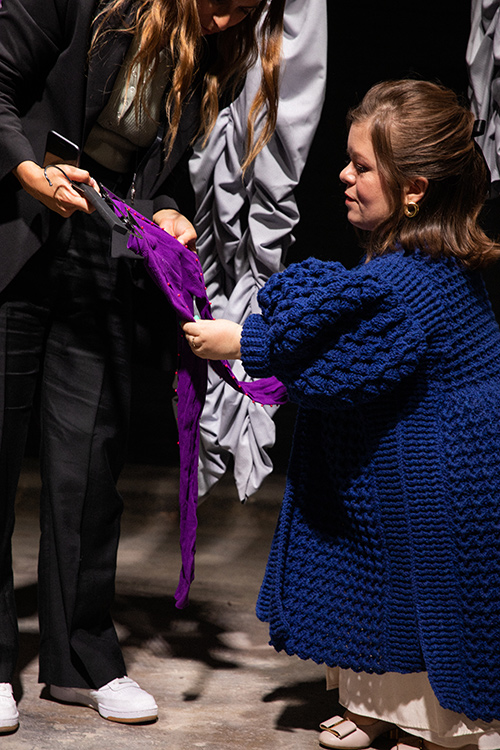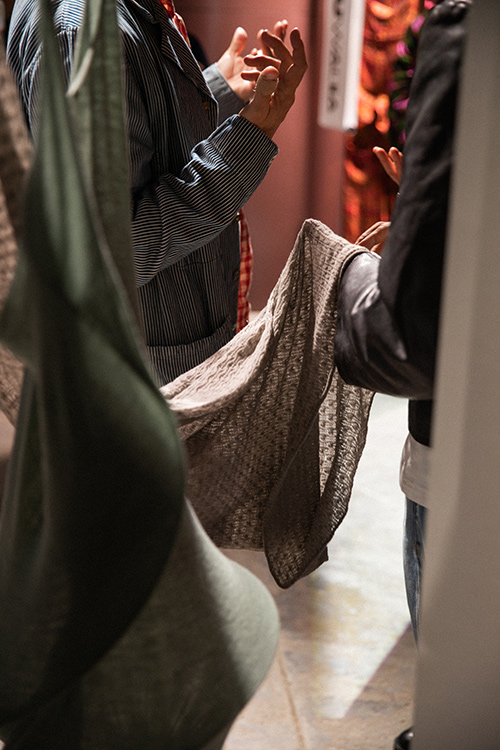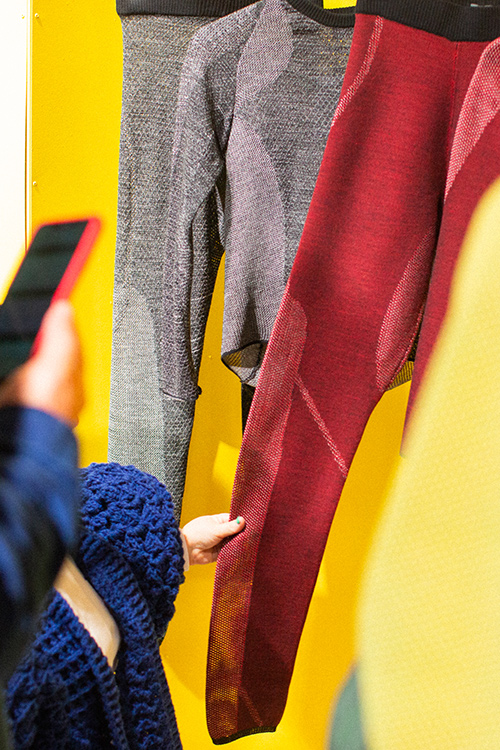Seven of the world’s best emerging design talent use The International Woolmark Prize to not only embrace the beauty and versatility of Merino wool, but showcase the fibre’s inherent innovative nature. As each finalist pushes wool’s boundaries, they also champion sustainable products and processes as they design for a cleaner, greener tomorrow.
Here, we spotlight the most innovative trends to emerge from the 2022 International Woolmark Prize.
RETHINKING WASTE
Ahluwalia
Ahluwalia calls on her customers to be part of a clever solution to curb over-consumption and waste via the label’s Circulate platform, in partnership with Microsoft. The materials sourced had Woolmark certification and were second-hand. This platform crowdsources second-hand clothing from the Ahluwalia community and uses AI technology to categorise and sort them, encouraging the wider community to take part in sustainable fashion in an accessible way. In addition, lots of deadstock fabrics are used within the collection, allowing Ahluwalia to repurpose yarns and fabrics that would otherwise be discarded or destroyed. Clever use of crustacean shell waste for beading embellishment is another way Ahluwalia is rethinking waste.
Jordan Dalah
Jordan Dalah used 100% deadstock fabrics and yarns for his 2022 Woolmark Prize collection. Deadstock fabrics are integral to the Jordan Dalah brand, but for this collection he went one step further by sourcing surplus fabric from a local deadstock supplier.
Peter Do
Creating 22 garments that can be styled to make 365 looks, Peter Do offers a new, more pragmatic and consumption-minded approach to design. With a focus on made-well and garment longevity through quality ingredients, make up and care by the consumer, Peter Do
eliminates the constant need to expand our wardrobes. Each garment in this modular capsule collection can be adapted, re-styled, and re-worked to create a new and refreshing look every time and in turn educates the consumer to make mindful purchasing decisions.
RUI
Using advanced whole-garment knitting technology, RUI creates zero-waste knitwear whilst optimizing design, drape and fit. The resultant garments offer a delicate but durable construction using extra fine Merino wool.
Saul Nash
Garments are multifunctional at the textile level as well as at a design level, for example a detachable hood and sleeves. Saul Nash uses deadstock, recycled membranes, or zero-waste technology to push the boundaries of sustainable design, with disposal considered at every stage. All materials, including trims, have been thoroughly investigated for their validity in longevity, disposal and functionality - a thoughtful approach demonstrating awareness of market.
MMUSOMAXWELL
Every garment is created using 100% natural fibres, showing MMUSOMAXWELL’s commitment to tackling microplastic pollution. With many items hand-made, this collection aims to minimise waste and energy consumption wherever possible.
KEEPING IT LOCAL
Ahluwalia
Ahluwalia uses design and creativity to tell rich and diverse multicultural stories from India, Nigeria and the UK through collections that have been made with beautiful highly skilled artisans. Developing fabrics with Stephen Walters and Sons and AW Hainsworth, Ahluwalia was able to bring to life her dual Indian-Nigerian heritage whilst staying true to her London roots.
Jordan Dalah
Using 100% deadstock textiles and deadstock yarn for the knitwear, the backbone of Dalah’s collection is sourced locally: the parts the consumer does not see, but are essential to the construction of his garments, such as the wadding, batting and stuffing that inflates each piece; a technique that he is known for using.
MMUSOMAXWELL
Sourcing local raw materials and end-to-end production, MMUSOMAXWELL took an artisanal approach to its 2022 Woolmark Prize collection, investing in craftsmanship and personal touches. Working with small hand-felting company Stephanie Bentum, local community workshop URBAN FLOCK, hand weavers SETT and BEAT and knitwear manufacturer VUYA KNITWEAR, each item promotes slow and small batch production through use of local artisanal craftsmanship to counteract the over-consumption pandemic and allows for greater product traceability.
EGONLAB
Working with Woolmark licensee Estethia, special treatments, 3D surfaces and double structure create new product concepts. For EGONLAB and Estethia, a commitment to ongoing research means offering innovative products each season to meet the needs of their customers. Sourcing all wool fabrics from the one supplier also allows for greater supply chain transparency.
NATURAL ALTERNATIVES
Jordan Dalah
Wool continues to prove to be a natural and sustainable rival to synthetic filling and wadding alternatives. Working with leading Australian wool processor Michell 1870 and Australian bedding manufacturer/brand MiniJumbuk, Jordan Dalah was able to develop wool fill to replace previously used PES fill to create the volume needed for the signature Jordan Dalah look. Wool wadding also offers a great warmth-to-weight ratio.
Ahluwalia
Designing her own jacquard knits with texture and artwork, Ahluwalia then utilised the Woolmark certified natural dyeing process offered by Tintoria Di Quaregna. The natural dyehouse uses methods to extract colouration from natural sources, with no metals used in the process. Natural fibres such as wool, cotton and silk absorb natural dyes better than synthetic textile fibres. Natural dyes have been proven to work well with wool textiles to produce a superior natural aesthetic quality and look.
RUI
Using the innovative OptimTM technology, RUI’s full-length double-faced weather-resistant coat eliminates the need for any synthetics, glue, membrane or lining. One side is smooth like a traditional outershell, while the other side is soft and brushed to offer next-to-skin comfort. This double-weave, membrane-free fabric provides maximum insulation whilst minimising fabric weight.
NEW TEXTILES
Ahluwalia
Ahluwalia designed her own woven jacquard materials with Stephen Walters and Sons and AW Hainsworth in wool/silk and 100% wool with micro/macro-patterning and ombre colouration using deadstock yarns from both mills. New innovations in the fabrics also included waste materials used as embellishment.
Saul Nash
Building knitted pieces from the ground up through carefully selected yarn inputs, such as K wool from Zegna Baruffa which has a high twist for increased natural elasticity, allowed Saul Nash to explore knitwear across compression, mid-layer above and below the waist as well as a hybrid production of knit and woven pieces. The collection offers a bridge between active solutions and more formal requirements, which is good anticipation about the way in which the market might move.
Innovative 100% Merino wool fabrics developed with Knitwear Lab - such as a compression wool hybrid jersey/airtex mesh knit or a double-faced jersey with integrated mesh holes - offer high stretch, strength and breathability. Wool materials were strengthened through the integration of specialty synthetic performance fibres such as Cordura nylon-6 and a recycled membrane for enhanced functionality.
RUI
Every fabric and technique that has been used is exclusive solely for this IWP2022 collection. Sourcing innovative fabrications with signature finishes in a collection made from 100% Merino wool, RUI pushes knitwear’s boundaries of form, silhouette, and surface, continuing to pursue an ethereal exercise in knitwear.
